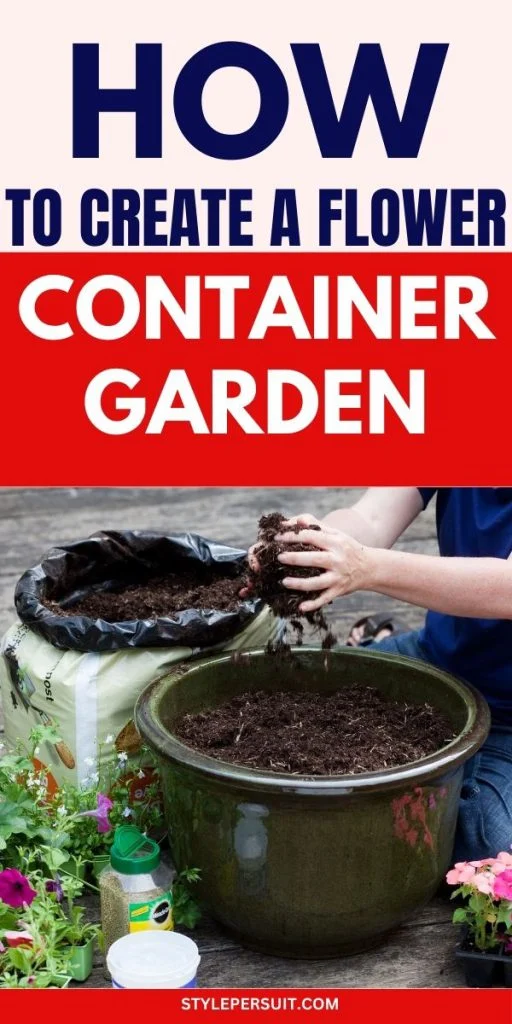Creating stunning flower container gardens for your home is easier than you think. This guide will walk you through selecting the right plants, planting them correctly, and maintaining their beauty throughout the season.
How to Plan and Prepare for Flower Container Shopping
1. Inventory Your Current Containers:
Make a list of the flower containers you already have at home.
Note whether each container will be placed in a sunny or shady spot.
Remember, a full sun area gets six or more hours of direct sunlight per day.
For convenience, click on the image above for a printable page to fill out and take with you to the nursery or garden center.
2. Determine the Number of Plants Needed:
For each pot, note how many plants you will need.
Large pots typically require:
One central “thriller” plant that is taller than the others.
Several “fillers” which are bushy plants.
Multiple “spillers” to drape over the edge of the pot.
For smaller pots:
You might use just two plants, with one being a trailing plant and the other a “thriller” or “spiller.”
Sometimes, a single beautiful specimen plant can be enough for a smaller pot.
How to Select the Ideal Plants for Container Gardening
1. Check the Plant Tags: Examine the tags on the plants to determine their light requirements and growth size. This helps match them with your container and gardening preferences.
2. Opt for Budding Plants: Look for plants with several buds rather than those in full bloom. While it’s tempting to choose fully bloomed flowers, budding plants are better suited for transplanting as they adapt more effectively.
3. Avoid Root-Bound Plants: Ensure the plants don’t have roots protruding from the bottom of their containers. If they do, you may need to gently separate and trim the excess roots to promote proper growth once transplanted.
4. Select Healthy Specimens: Choose plants that appear well-hydrated and vibrant. Look for full, lush foliage without signs of wilting or discoloration. Healthy plants are more likely to thrive in their new container environment.
Creating a Container Flower Garden
1. Pack Plants Tightly: When planting annual flowers in containers, it’s beneficial to pack them closely together. Since these plants typically last for about four months, they can tolerate being crowded. This dense planting style helps create lush and visually stunning displays similar to those seen in floral arrangements and magazines.
2. Use Filler in Large Pots: To reduce the amount of soil needed and to lighten the weight of large containers, consider using filler material. This can include repurposing old nursery cell packs by flipping them upside down or using slightly crushed aluminum cans. Not only does this save on soil, but it also makes moving and handling the pots easier.
3. Keep Records: Keep track of the plants you’ve used by saving the nursery tags and taking photos of your finished arrangements. This documentation will come in handy next year when planning your garden, especially if you discover a particular combination of flowers that worked exceptionally well together.
Maintaining Healthy Potted Flowers
1. Establish a Watering Routine: Ensure thorough watering by allowing water to drain from the bottom of the pot. A general rule is to water every third day, adjusting as needed based on weather conditions, season, pot size, and material. Terra cotta pots and smaller containers may require more frequent watering. Opt for watering in the cooler parts of the day, preferably in the morning or early evening.
2. Provide Regular Fertilization: While potted plants often come with some fertilization in their soil, supplementing with liquid fertilizer every few weeks or monthly can support their growth and vitality.
3. Prune for Maintenance: As summer progresses, your potted plants may become overgrown. Pruning them with garden pruners not only maintains their appearance but also stimulates bushier growth, ensuring they remain visually appealing over time.
Additional Tips for Container Flower Gardening
1. Get Creative with Planters: Look for household items with drainage holes to repurpose into unique planters. Anything from old chairs and tree stumps to boots and antique colanders can be transformed into charming containers for your flowers.
2. Save on Expenses: Purchase entire flats of annuals when they’re on sale to use as fillers for your containers. Alternatively, consider organizing a plant swap with friends to diversify your garden without breaking the bank.
3. Experiment with Perennials: While this article primarily focuses on annual flowers, don’t overlook the possibility of planting perennials in containers. You can add a touch of perennial beauty by transplanting small hostas or other perennial flowers into your pots for long-lasting enjoyment.

